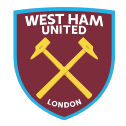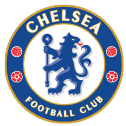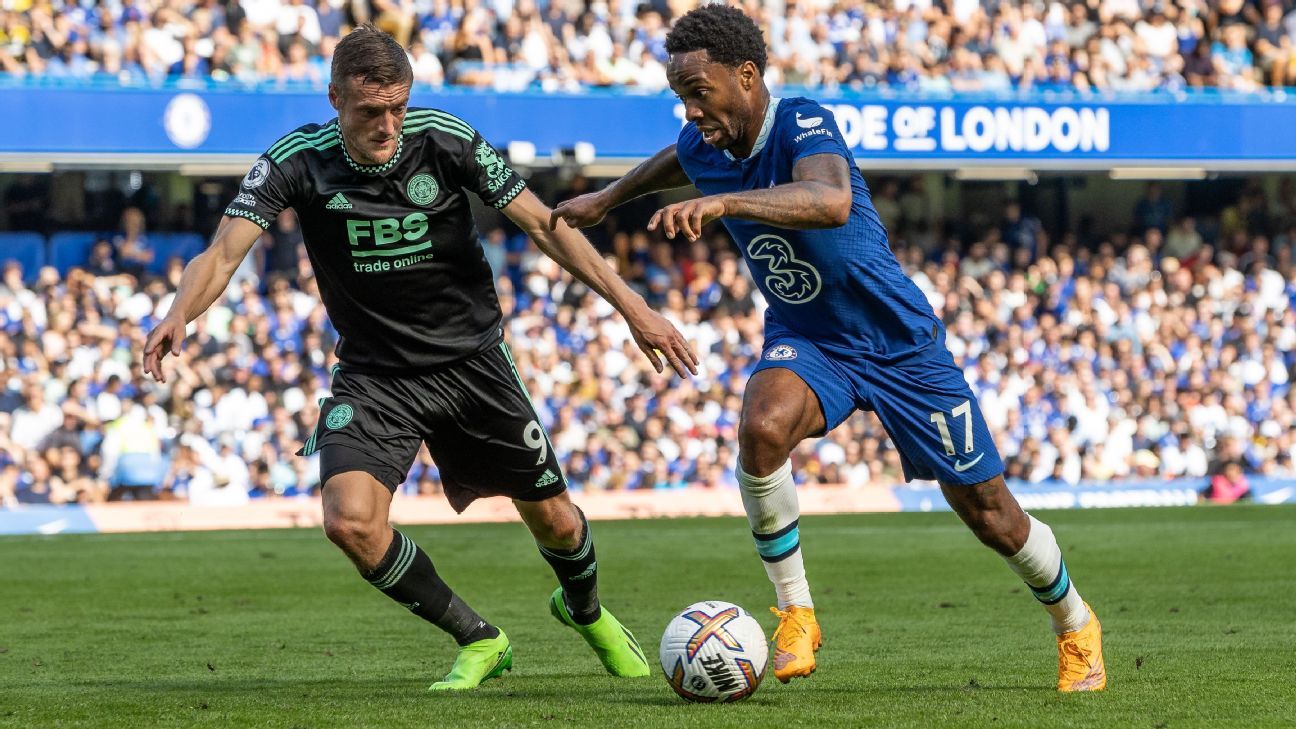Two things have become abundantly clear in the opening weeks of the Premier League season: Everyone has way too much money to burn, and almost no one is enjoying themselves. You could even make the case that money has made almost no one any better.
Chelsea spent $310 million in transfer fees to seemingly become a thinner team at the front and back and fire their Champions League-winning manager after losing to Dinamo Zagreb. (In turn, they plucked away the manager of one of the league’s only 100% positive stories, Brighton.)
Manchester United spent $264 million to get blown out by Brentford and, after a brief rally, lose at home to Real Sociedad. Liverpool spent $99 million to watch its midfield depth issues get worse, draw with Everton and get overrun by Napoli.
West Ham spent $200 million to sit in the relegation zone, and Aston Villa has spent $220 million over two years to nearly join them. Nottingham Forest spent $178 million to watch its odds of relegation barely change.
Wolves spent $150 million to become a more cartoonish version of their “soccer without goals” selves. Everton paid $94 million to trade Richarlison for Neal Maupay and go nearly four months (and counting) between wins.
Hell, Manchester City spent $153 million and brought in the goal-scoring son of Odin himself (okay, son of Alfie), Erling Haaland, all to basically stay the same. (They’ve scored 20 goals in their first six EPL matches with him; they scored 24 in their last six without him.)
Acknowledging that teams could jell and improve as new pieces better get to know their surroundings — and acknowledging that Leicester has attempted to avoid ridiculous spending and is currently in last place (and you evidently have to light your checkbook on fire just to keep up) — there are lots of different forms of anxiety in the Premier League. This piece could talk about just about any team, but here are six that are feeling distinct types of anxiety at the moment.
Jump to: Leicester | Nottingham Forest | Wolves | West Ham | Liverpool | Chelsea
 Leicester: When trying to be fiscally responsible goes wrong
Leicester: When trying to be fiscally responsible goes wrong
We’ll start with maybe the most surprising name on the relegation contenders list. Caesars currently lists Leicester as the No. 3 most likely team to go down — their betting odds are +190, equivalent to a 34% chance. Considering they won the Premier League barely six years ago, and considering they finished fifth in both 2020 and 2021, this is absolutely jarring. But it’s well-earned.
Leicester has allowed 16 goals in six matches, their worst defensive start in nearly 40 years. When they finished fifth in 2021, they did so with a defensive core of goalkeeper Kasper Schmeichel and centre-backs Jonny Evans, Wesley Fofana and Caglar Soyuncu. Schmeichel, 35, moved on to Nice this summer, Fofana moved on to Chelsea in a big-money deal, and Soyuncu’s form (and/or his relationship with manager Brendan Rodgers) has regressed to such a degree that it looked like he might leave during the transfer window as well — his only match this season was in a dire League Cup win over Stockport County.
– O’Hanlon: How Leicester went from top four to relegation candidates (E+)
Thus far, the new defensive arrangement has been a disaster. Danny Ward, Schmeichel’s replacement, is boasting just a 50% save percentage and minus-2.5 goals prevented (StatsPerform’s comparison of your goals allowed to the post-shot xG for shots on target). The centre-backs in front of him — the 34-year old Evans and a combination of Daniel Amartey and a pre-departure Fofana — have struggled as well. After allowing at least two goals in each of their first four matches, they seemed to take a step forward in allowing only one to Manchester United. But three days later, they gave up five to Brighton. The only player Leicester spent a transfer fee to acquire this summer was Reims centre-back Wout Faes, but he only just arrived.
That’s right, in a summer in which the Premier League smashed all spending records, Leicester acquired Faes and backup goalkeeper Alex Smithies (on a free transfer from second-division Cardiff). That’s it.
They invested a massive sum of money in new training facilities that were unveiled last year, and they have been remarkably disciplined in their avoidance of panic moves and their focus on the long-term. But when most of your competition has lost its mind and brought in as much talent as humanly possible, and you’re looking at a slightly stale roster (one that might have a stale relationship with its manager), problems will develop.
Perhaps Faes solves some problems. Lord knows Leicester has made plenty of astute additions through the years. But the Foxes’ biggest issue at the moment is transition defense, and those problems start well before the back line gets involved. In what I call transition possessions — those that start outside the attacking third and last 20 or fewer seconds — Leicester has allowed a league-worst five goals. Thirteen percent of opponents’ shots have been worth at least 0.3 xG (most in the league), and opponents are averaging 0.14 xG per shot overall (also the most).
Perhaps even more alarming: It could be worse. They pulled their only point from a draw with Brentford in which they scored two goals from shots worth 0.6 xG.
It could — and should — also be better, though. They have gotten little from Jamie Vardy thus far (zero goals from shots worth 1.2 xG), but the combination of Patson Daka and Kelechi Iheanacho brought life to the attack last Sunday. Both James Maddison and Youri Tielemans have played well, combining for two goals and two assists among 21 chances created, and if they get more from their forwards, the attack could brighten immensely.
And if Vardy were to start seeing more use from the bench late in matches, it might help to fix the team’s persistent late-match issues: Their goal differential in the final 30 minutes of matches is a shocking -1.4 per match. That average is almost unsustainably poor, but it is calling to mind struggles from last year, when stoppage-time goals turned two draws to losses and two wins to draws over the second half of the season. Add those six lost points to last year’s tally, and they would have reached the Europa League again.
In theory, there’s still too much high-end talent for Leicester not to rally at some point. But how many points will they drop in the meantime? And will such a rally take place with Rodgers still at the helm? He was the betting favorite for Next Manager Sacked before Chelsea cut to the front of that line, and managers don’t usually survive losing streaks.
 Nottingham Forest: The risk of trying to buck a trend
Nottingham Forest: The risk of trying to buck a trend
In 2017-18, all three teams promoted from England’s second division — Newcastle, Brighton and Huddersfield — survived to play in the Premier League for a second season, and only Huddersfield was within six points of the drop zone.
Life’s been tough for newbies ever since. In three of four seasons, two of three promoted teams have immediately gone back down, and in the other season (2019-20), Aston Villa survived by one point to prevent it from happening there too. Huddersfield and Sheffield United lasted only two seasons before going back down, and Leeds needed a late-season miracle to avoid the same fate last season.
In this time period, only Wolves and Brentford have both earned promotion and remained in the Premier League without at least one relegation scare. Brentford hasn’t been up for very long.
You almost can’t blame Forest owner Evangelos Marinakis for opening up the checkbook, then. Forest attempted to spend its way off of the relegation bubble, laying down more than $175 million in transfer fees for 21 new signings. Thus far, 59% of their Premier League minutes have gone to newcomers, and that number could rise considering that many of the acquisitions only recently arrived. They were always going to have to bring in a large number of players simply because of the number of loanees that were involved in last season’s promotion push.
But they added more than expected and aimed high from a quality standpoint. They spent $32 million to sign Wolves’ attacking midfielder Morgan Gibbs-White, $22 million on Union Berlin forward Taiwo Awoniyi and $22 million on Liverpool fullback Neco Williams, and they brought in proven players like Watford forward Emmanuel Dennis, Atletico Madrid fullback Renan Lodi (on loan) and others.
In terms of pure talent, this looks like a midtable Premier League team. But they’re thus far played like a team that still has to wear name tags in practice. Forest have no established identity. They have low possession numbers (44% thus far, 14th in the league) but don’t counterattack effectively. They attempt the fifth-most long balls but are completing them at the second-worst rate. In attack, they rank 15th in shots per possession and 17th in xG per shot; in defense, they rank 20th and 15th, respectively. There is no cohesive style, which … makes sense, really. Whether or not they had a choice, there’s generally a reason why teams don’t sign 20-plus players in a single summer.
This is basically a race against time. How many points will the Reds drop before Steve Cooper is able to actually craft a cohesive team with an identifiable style? They bought time with a 1-0 win over West Ham in their home debut, and they drew at Everton, too. But they’ve been outscored 11-2 in their past three matches, and in pushing for a winner after blowing a 2-0 lead against relegation rival Bournemouth last Saturday, they instead allowed a game-winner in the 87th minute.
Can they rally before too much damage has been done?
1:33
Gab and Juls react to Diego Costa’s potential return to the Premier League with Wolves.
 Wolves: Spending big to stay the same
Wolves: Spending big to stay the same
You know things have taken an odd turn when you’re appealing to sign Diego Costa.
Wolves have long been one of England’s most fearless and active zipper clubs, constantly going up and down from one level of the pyramid to another. But they’ve put together a remarkable run since returning to the Premier League in 2018. They finished seventh in both 2018-19 and 2019-20 and reached the Europa League quarterfinals in 2020 before slipping a hair to 13th and 10th in the last two seasons.
When former Benfica manager Bruno Lage took over Nuno Espirito Santo last season, he took Wolves’ two most identifiable characteristics — stingy defense and minimal attack — and exaggerated them. Wolves allowed just 43 goals (fewest outside of the league’s top four finishers) but scored just 38 (fewest among teams not relegated). They neither allowed nor created anything easy.
Through six matches this season, they’re on pace to allow just 25 goals … and score 19. They play in a defiantly analytics-unfriendly way, attempting plenty of shots (eighth in shots per possession) but attempting almost no high-value shots. They rank 19th in xG per shot, and only 3% of their shot attempts have been worth 0.3 xG or more (20th). Their defensive stats are good again, but while both Wolves and opponents have unsustainably strong save percentages at the moment, opponents are attempting more high-value chances. That will probably make regression to the mean a bit harsher on Wolverhampton; with just one win in six matches, any regression could come with harsh repercussions.
In vacuum, this makes sense — a zipper club finding something effective, then watching it slowly lose effectiveness over time. But when you lay down the seventh-highest transfer expenditures in the league, and you make big-money deals like paying Sporting Lisbon nearly $50 million to sign midfielder Matheus Nunes and spending $36 million to bring in Valencia winger Goncalo Guedes, you expect to improve.
Guedes draws contact well, and Nunes pressures the ball and forces the issue in the dribbling department, but neither creates high-quality shots. Adama Traore, back from Barcelona loan, doesn’t either. The only two players who have averaged at least 0.45 xG+xA per 90 minutes for the team this year — not a particularly ambitious average, by the way — are either hurt (new addition Sasa Kalajdzic) or gone (new Nottingham Forest member Morgan Gibbs-White).
Wolves need finishing, and when they finally landed Stuttgart’s Kalajdzic late in the transfer window, he almost immediately tore his ACL. They tried to sneak veteran Diego Costa in, and he was initially denied a work permit before Wolves successfully appealed. He scored four goals in 15 matches last season for Brazil’s Atletico Mineiro and hasn’t scored double-digit goals since he was with Chelsea six seasons ago. But he’s now the new hope.
While the scoring averages, for and against, should increase simply because of how unsustainably low they are at the moment, there’s no immediate reason to think that Wolves will land in the top half of the league again.
 West Ham: When adding talent subtracts cohesion
West Ham: When adding talent subtracts cohesion
-
Step 1: Qualify for European competition for two straight years by giving opponents lots of the ball and allowing them to take whatever long-range shots they want but dominating specific areas of the pitch, playing more direct ball than most good teams and taking all the good shots
-
Step 2: Spend $200 million (third most in the league), including $110 million on attackers — Lyon attacking midfielder Lucas Paqueta, Sassuolo forward Gianluca Scamacca, Burnley winger Maxwel Cornet
-
Step 3: Stop producing any attacking quality
David Moyes’ West Ham plays even more directly than before in 2022-23, but they appear stuck between their old attackers and new attackers, and no one’s performing. Pacqueta, Scamacca and Cornet have combined for zero league goals on four shots worth 0.46 in 279 minutes of play thus far, and last year’s creative trio of Jarrod Bowen, Michail Antonio and Pablo Fornals have all seen both their creation and scoring averages decrease. West Ham currently ranks 13th in shots per possession and 13th in xG per shot, and their opponents are producing more quality and quantity at the moment.
Throw in a massive gap in the finishing department — West Ham is averaging 0.3 post-shot expected goals for shots on target (xGOT) per shot on target, ninth-highest in the league, and opponents are averaging 0.38, third-most — and you’ve got a recipe for early-season disaster. The Hammers are currently 18th in the table with a league-low three goals in six matches.
It’s potentially gotten better of late. After three straight losses to start the season (combined score: opponents 5, WHU 0), West Ham beat Aston Villa, drew with Tottenham Hotspur and were unlucky in a 2-1 loss to Chelsea. Including a pair of Europa Conference League wins (one in qualification, one in group play), they’ve scored nine goals in their last five matches, even if they have yet to score more than one goal in an EPL match.
In last week’s Conference League win over FCSB, Cornet created four chances, Scamacca attempted five shots worth 0.42 xG (not great but better) and Bowen and Antonio came off the bench to combine for two goals and an assist in just 44 minutes. The energy and creativity were both where they need to be, even if West Ham also allowed shots worth 1.3 combined xG to a team that EloFootball.com ranks 146th in Europe.
Maybe things are gelling for Moyes, but even in their improving state, they pulled just one point from Spurs and Chelsea, two teams that will be obstructing their path back toward another spot in Europe.
2:19
Steve Nicol and Craig Burley react to Liverpool’s 4-1 defeat to Napoli in the UEFA Champions League.
 Liverpool: Spending big without addressing your biggest issue
Liverpool: Spending big without addressing your biggest issue
By comparison, Jurgen Klopp’s Liverpool was almost fiscally responsible this offseason. While half the Premier League spent at least $50 million more than what they brought in in terms of transfer fees, Liverpool brought in $89 million from transfer departures and spent only — only — $99 million, mostly on 23-year old centre-forward Darwin Nunez. Essentially, they traded Sadio Mane (now at Bayern) for Nunez, fullback Neco Williams (Forest) for 18-year old Calvin Ramsey and backup winger Takumi Minamino (Monaco) for 19-year old attacking midfielder Fabio Carvalho.
Those “trades” could all work out in Liverpool’s favor over the next couple of seasons. Carvalho has already scored twice in 150 minutes and snared a game-winner against Newcastle, and while Nunez’s start has been volatile — he was suspended for head-butting an opponent and hasn’t scored since August 6 — he’s taking lots of shots and getting plenty of touches in the box. He’ll probably do just fine at Anfield.
Liverpool, however, is not doing fine. The “trades” did little to alleviate what age is doing to their overall roster — of the 15 players who have logged more than 150 minutes in all competitions, seven are at least 30, and only three are under 25 — and did little to address what was already becoming a concern last season: midfield depth. Injuries have meant heavier-than-expected usage for both 36-year old James Milner and 19-year old Harvey Elliott, and both are pretty one-dimensional players at this point (Milner in intervention, Elliott in attack).
As a result, Liverpool is currently a team that looks mostly like Liverpool — lots of possession, lots of pressing, far more shot attempts than most opponents — but is completely lacking in both creativity and pace. Only 5.1% of their shots have been worth at least 0.3 xG in league play (12th in the Premier League), compared to 11.3% for their opponents (18th). They’re taking more shots, but opponents are attempting most of the good ones, and those averages, of course, don’t include what Napoli did to them last week in Champions League play.
Napoli 4, Liverpool 1 (Sept. 7)
-
Shot: Napoli 18, Liverpool 15
-
xG per shot: Napoli 0.23, Liverpool 0.07
-
Total xG: Napoli 4.1, Liverpool 1.0
-
Total post-shot xG for shots on target: Napoli 6.2, Liverpool 1.8
Liverpool did a lot of things Klopp tends to want to do. They enjoyed 61% possession, they both started and ended more than twice as many possessions as Napoli in the attacking third, they attempted just 36% of their passes in their own half (Napoli: 72%), and they created four shots on target from set pieces. But Napoli frustrated Liverpool’s attack while carving up both their midfield and defense and creating high-level chances at will.
And all this says nothing, of course, about the sprints.
Manchester United covered more distance (114km) & made 51 more sprints than Liverpool this evening.
Erik Ten Hag’s Running Reds. pic.twitter.com/9nvl8t0rOA
— Statman Dave (@StatmanDave) August 22, 2022
📊 Liverpool have been out run in every single match this season. They are behind every opponent on distance covered, high intensity runs and sprints. #lfc [mirror] pic.twitter.com/yt0yyf2RvK
— Anfield Watch (@AnfieldWatch) September 8, 2022
(I never quite know what to make of running stats, but in this case it can’t really say anything good.)
This is currently an older, slower and thinner Liverpool squad. If the Reds peak in the spring and make another Champions League run, then so be it. But evidently $99 million doesn’t get you what it used to.
 Chelsea: Why you don’t ask your manager to serve as sporting director (and then hire another manager to manage)
Chelsea: Why you don’t ask your manager to serve as sporting director (and then hire another manager to manage)
Long term, new owner Todd Boehly’s stewardship of Chelsea Football Club could work out just fine. He’s been at least partially responsible for the juggernaut that the Los Angeles Dodgers have become in recent years, and he knows what a well-run franchise looks like. But he’s taken some short-term lumps.
Boehly’s decision to basically serve as his own director of football, with manager Thomas Tuchel as his primary scout and adviser, blew up in his face pretty quickly. To be sure, the summer acquisitions of players like not only defender Wesley Fofana (21) and wingback Marc Cucurella (24), but also teenagers like midfielder Carney Chukwuemeka (18) and goalkeeper Gabriel Slonina (18), could end up paying off for quite a while down the line. But they paid inflated price tags on both Fofana ($88 million) and Cucurella ($72 million), and they also paid a combined $75 million on attackers Raheem Sterling (justifiable) and Tuchel favorite Pierre-Emerick Aubameyang (less so), all because Tuchel had given up on extremely recent attacker signings. Timo Werner was sent back to RB Leipzig for a fraction of what Chelsea paid for him two years ago, and last year’s star signing, Romelu Lukaku, was sent back to Inter on loan and at another potential (and potentially massive) loss.
2:00
Craig Burley debates how Graham Potter will handle Chelsea’s senior players.
And after trying so hard to give Tuchel what he said he needed — despite the fact that Tuchel seems to conclude that he can’t work with a given player within a year or two — Chelsea inched toward September with a team that was thinner in attack, poor in defense and as reliant as ever on 31-year old defensive midfielder N’Golo Kante, who’s been hurt since mid-August. And Boehly fired Tuchel last week following a Champions League loss to Dinamo Zagreb.
I can somewhat justify the Tuchel firing for one simple reason: The well was poisoned. Tuchel was miserable (as tends to happen once he’s been in the same place for a couple of seasons), and the team seemed to be miserably tuning him out. And while giving him such control over personnel acquisitions was a mistake, you shouldn’t necessarily make a new mistake in service of an old one.
This weekend’s match postponements gave new manager Graham Potter (formerly of Brighton) a bit of extra practice time with his new team, which can’t be a bad thing. And while attacking was the primary issue in Zagreb, defense is the first thing he needs to fix. After losing two primary defenders, bringing in Fofana and Napoli’s Kalidou Koulibaly and then losing Kante to injury, there’s been no cohesion at the back.
Chelsea ranks 19th in xG allowed per shot (only Leicester is worse), and 60% of opponents’ shots have come from inside the defensive box, the most in the league. Nearly half of these shots (48%, also the most) have been on target, putting far too much pressure on keeper Edouard Mendy. Potter’s Brighton was a proper possession team, and they were excellent in transition defense. We’ll see how long it takes — and again, how many points Chelsea drops in the interim — before he gets them on track.
